Cycles of Matter
Bill Nye The Water Cycle
Video - The Carbon Cycle
NASA The Carbon Cycle Video
The Nitrogen Cycle - Science
Bill Nye The Water Cycle
Video - The Carbon Cycle
NASA The Carbon Cycle Video
The Nitrogen Cycle - Science
Before you read, decide if you agree or disagree with each of these statements. As you read this lesson, see if you change your mind about any of the statements.
1. Carbon, nitrogen, and other types of matter are used by living things over and over again.
2. Clouds are made of water vapor.
Where does the water go?
All water, including the water in this waterfall, can move throughout an ecosystem in a cycle. It can also change forms. What other forms do you think water takes as it moves through an ecosystem?
1
Like all matter on Earth, water is recycled. It constantly moves between Earth and its atmosphere. You could be drinking the same water that a Tyrannosaurus rex drank 65 million years ago!
1. Read and complete a lab safety form.
2. Half-fill a plastic cup with warm water.
3. Cover the cup with plastic wrap. Secure the plastic with a rubber band.
4. Place an ice cube on the plastic wrap. Observe the cup for several minutes. Record your observations in your Science Journal.
Think About This
1.What did you observe on the underside of the plastic wrap? Why do you think this
happened?
happened?
2.How does this activity model the formation of raindrops?
3. Key Concept Do you think other matter moves through the environment? Explain your answer.
10
The water that you used to wash your hands this morning might have once traveled through the roots of a tree in Africa or even have been part of an Antarctic glacier. How can this be? Water moves continuously through ecosystems. It is used over and over again. The same is true of carbon, oxygen, nitrogen, and other types of matter. Elements that move through one matter cycle may also play a role in another, such as oxygen’s role in the water cycle.
The Water Cycle
Look at a globe or a map. Notice that water surrounds the landmasses. Water covers about 70 percent of Earth’s surface.
Most of Earth’s water—about 97 percent—is in oceans. Water is also in rivers and streams, lakes, and underground reservoirs. In addition, water is in the atmosphere, icy glaciers, and living things.
Water continually cycles from Earth to its atmosphere and back again. This movement of water is called the water cycle. It involves three processes: evaporation, condensation, and precipitation.
Evaporation
The Sun supplies the energy for the water cycle, as shown in Figure 1. As the Sun heats Earth’s surface waters, evaporation occurs. Evaporation (ih va puh RAY shun), is the process during which liquid water changes into a gas called water vapor. This water vapor rises into the atmosphere. Temperature, humidity, and wind affect how quickly water evaporates.
Water is also released from living things. Transpiration is the release of water vapor from the leaves and stems of plants. Recall that cellular respiration is a process that occurs in many cells. A by-product of cellular respiration is water. This water leaves cells and enters the environment and atmosphere as water vapor.
Figure 1 During the water cycle, the processes of evaporation, condensation, and precipitation move water from Earth’s surface into the atmosphere and back again.
Condensation
The higher in the atmosphere you are, the cooler the temperature is. As water vapor rises, it cools and condensation occurs.
Condensation (kahn den SAY shun), is the process during which water vapor changes into liquid water. Clouds form because of condensation.
Clouds are made of millions of tiny water droplets or crystals of ice. These form when water vapor condenses on particles of dust and other substances in the atmosphere.
Precipitation
Water that falls from clouds to Earth’s surface is called precipitation (prih sih puh TAY shun). It enters bodies of water or soaks into soil. Precipitation can be rain, snow, sleet, or hail. It forms as water droplets or ice crystals join together in clouds. Eventually, these droplets or crystals become so large and heavy that they fall to Earth. Over time, living things use this precipitation, and the water cycle continues.
1. Key Concept Check What forms does water take as it moves through ecosystems?
1
SCIENCE USE V. COMMON USE
element
Science Use one of a class of substances that cannot be separated into simpler substances by chemical means
Science Use one of a class of substances that cannot be separated into simpler substances by chemical means
Common Use a part or piece
7
Just as water is necessary for life on Earth, so is the element nitrogen. It is an essential part of proteins, which all organisms need to stay alive. Nitrogen is also an important part of DNA, the molecule that contains genetic information. Nitrogen, like water, cycles between Earth and its atmosphere and back again as shown in Figure 2.
1.  Reading Check What do living things use nitrogen for?
Reading Check What do living things use nitrogen for?
 Reading Check What do living things use nitrogen for?
Reading Check What do living things use nitrogen for?
From the Environment to Organisms
Recall that the atmosphere is mostly nitrogen. However, this nitrogen is in a form that plants and animals cannot use. How do organisms get nitrogen into their bodies? The nitrogen must first be changed into a different form with the help of certain bacteria that live in soil and water. These bacteria take in nitrogen from the atmosphere and change it into nitrogen compounds that other living things can use. The process that changes atmospheric nitrogen into nitrogen compounds that are usable by living things is called nitrogen fixation (NI truh jun · fihk SAY shun). Nitrogen fixation is shown in Figure 3.
Plants and some other organisms take in this changed nitrogen from the soil and water. Then, animals take in nitrogen when they eat the plants or other organisms.
2.  Reading Check What is nitrogen fixation?
Reading Check What is nitrogen fixation?
 Reading Check What is nitrogen fixation?
Reading Check What is nitrogen fixation?
Figure 3 Certain bacteria convert nitrogen in soil and water into a form usable by plants.
From Organisms to the Environment
Some types of bacteria can break down the tissues of dead organisms. When organisms die, these bacteria help return the nitrogen in the tissues of dead organisms to the environment. This process is shown in Figure 4.
Nitrogen also returns to the environment in the waste products of organisms. Farmers often spread animal wastes, called manure, on their fields during the growing season. The manure provides nitrogen to plants for better growth.
5
Almost all living things need oxygen for cellular processes that release energy. Oxygen is also part of many substances that are important to life, such as carbon dioxide and water. Oxygen cycles through ecosystems, as shown in Figure 5.
Earth’s early atmosphere probably did not contain oxygen gas. Oxygen might have entered the atmosphere when certain bacteria evolved that could carry out the process of photosynthesis and make their own food. A by-product of photosynthesis is oxygen gas. Over time, other photosynthetic organisms evolved and the amount of oxygen in Earth’s atmosphere increased.
Today, photosynthesis is the primary source of oxygen in Earth’s atmosphere. Some scientists estimate that unicellular organisms in water, called phytoplankton, release more than 50 percent of the oxygen in Earth’s atmosphere.
Many living things, including humans, take in the oxygen and release carbon dioxide. The interaction of the carbon and oxygen cycles is one example of a relationship between different types of matter in ecosystems. As the matter cycles through an ecosystem, both the carbon and the oxygen take different forms and play a role in the other element’s cycle.
Figure 5 Most oxygen in the air comes from plants and algae.
 Visual Check Describe your part in the oxygen cycle.
Visual Check Describe your part in the oxygen cycle.
1
REVIEW VOCABULARY
bacteria
a group of microscopic unicellular organisms without a membrane-bound nucleus
a group of microscopic unicellular organisms without a membrane-bound nucleus
12
All organisms contain carbon. It is part of proteins, sugars, fats, and DNA. Some organisms, including humans, get carbon from food. Other organisms, such as plants, get carbon from the atmosphere or bodies of water. Like other types of matter, carbon cycles through ecosystems, as shown in Figure 6.
Carbon in Soil
Like nitrogen, carbon can enter the environment when organisms die and decompose. This returns carbon compounds to the soil and releases carbon dioxide (CO2) into the atmosphere for use by other organisms. Carbon is also found in fossil fuels, which formed when decomposing organisms were exposed to pressure, high temperatures, and bacteria over hundreds of millions of years.
Carbon in Air
Recall that carbon is found in the atmosphere as carbon dioxide. Plants and other photosynthetic organisms take in carbon dioxide and water and produce energy-rich sugars. These sugars are a source of carbon and energy for organisms that eat photosynthetic organisms. When the sugar is broken down by cells and its energy is released, carbon dioxide is released as a by-product. This carbon dioxide gas enters the atmosphere, where it can be used again.
The Greenhouse Effect
Carbon dioxide is one of the gases in the atmosphere that absorbs thermal energy from the Sun and keeps Earth warm. This process is called the greenhouse effect. The Sun produces solar radiation, as shown in Figure 7. Some of this energy is reflected back into space, and some passes through Earth’s atmosphere. Greenhouse gases in Earth’s atmosphere absorb thermal energy that reflects off Earth’s surface. The more greenhouse gases released, the greater the gas layer becomes and the more thermal energy is absorbed. These gases are one factor that keeps Earth from becoming too hot or too cold.
1.  Reading Check What is the greenhouse effect?
Reading Check What is the greenhouse effect?
 Reading Check What is the greenhouse effect?
Reading Check What is the greenhouse effect?While the greenhouse effect is essential for life, a steady increase in greenhouse gases can harm ecosystems. For example, carbon is stored in fossil fuels such as coal, oil, and natural gas. When people burn fossil fuels to heat homes, for transportation, or to provide electricity, carbon dioxide gas is released into the atmosphere. The amount of carbon dioxide in the air has increased due to both natural and human activities.
Figure 7 Some thermal energy remains close to the Earth due to greenhouse gases.
 Visual Check What might happen if heat were not absorbed by greenhouse gases?
Visual Check What might happen if heat were not absorbed by greenhouse gases?
1
ACADEMIC VOCABULARY
release
(verb) to set free or let go
(verb) to set free or let go
Lesson Review
Visual Summary
Matter such as water, oxygen, nitrogen, and carbon cycles through ecosystems.
Melbourne Etc/Alamy
The three stages of the water cycle are evaporation, condensation, and precipitation.
The greenhouse effect helps keep the Earth from getting too hot or too cold.
What do you think NOW?
You first read the statements below at the beginning of the lesson.
1. Carbon, nitrogen, and other types of matter are used by living things over and over again.
2. Clouds are made of water vapor.
Did you change your mind about whether you agree or disagree with the statements? Rewrite any false statements to make them true.
Lesson Assessment
Use Vocabulary
1. Distinguish between evaporation and condensation.
2. Define nitrogen fixation in your own words.
3. Water that falls from clouds to Earth’s surface is called __________.
Understand Key Concepts
4. What is the driving force behind the water cycle?
A.gravity
B.plants
C.sunlight
D.wind
5. Infer Farmers add nitrogen to their fields every year to help their crops grow. Why must farmers continually add nitrogen when this element recycles naturally?
6. Which process helps keep temperatures on Earth from becoming too hot or too cold?
A.condensation
B.global warming
C.greenhouse effect
D.nitrogen fixation
7. During the carbon cycle, __________ take in carbon dioxide from the atmosphere.
A.animals
B.consumers
C.decomposers
D.plants
8. Which is true of the amount of matter in ecosystems?
A.It decreases over time.
B.It increases over time.
C.It remains constant.
D.Scientists cannot determine how it changes.
9. Which process is occurring at the location indicated by the arrow?
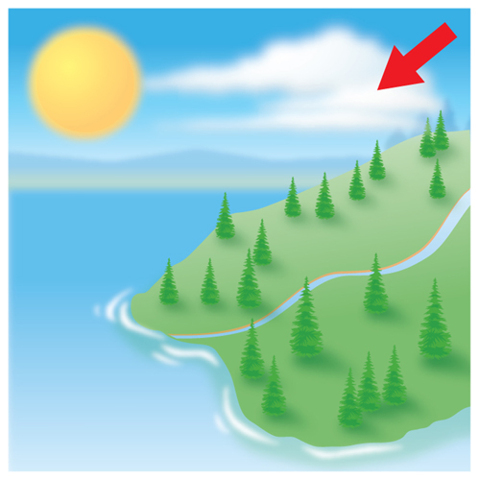

A.condensation
B.nitrogen fixation
C.precipitation
D.transpiration
Interpret Graphics
10. Sequence Draw a graphic organizer like the one below and sequence the steps in the water cycle.


11. Summarize how the greenhouse effect moderates temperatures on Earth.
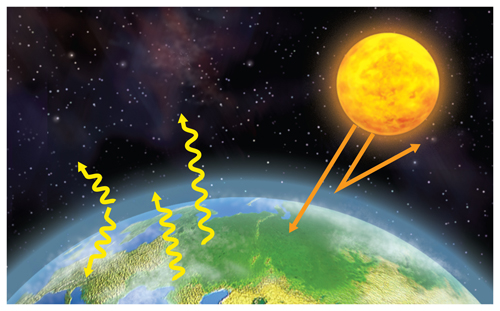
Critical Thinking
12. Explain how oxygen cycles through the ecosystem in which you live.
13. Consider How might ecosystems be affected if levels of atmospheric CO2 continue to rise?
14. Compare and contrast the oxygen cycle and the nitrogen cycle within living systems.
15. Recommend a strategy for decreasing the amount of carbon dioxide in the atmosphere.
16. Predict what would happen if all the nitrogen-fixing bacteria in an ecosystem were
removed.
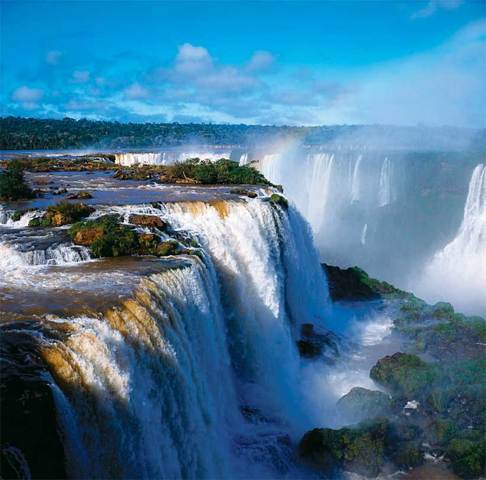



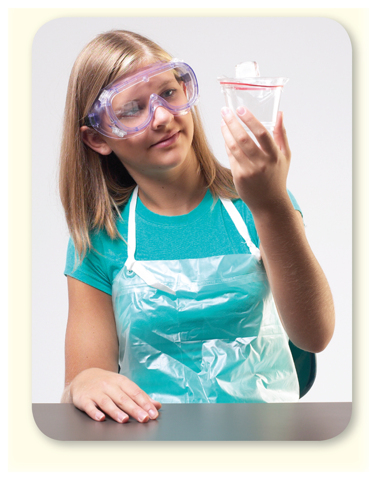
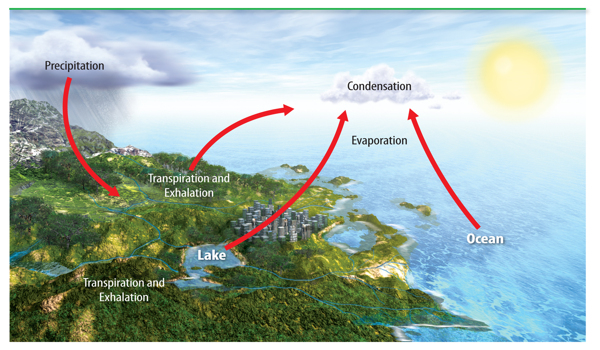
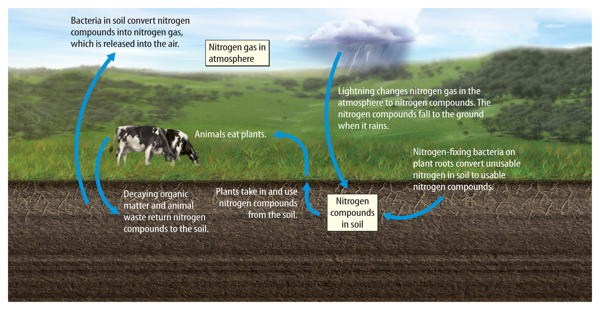

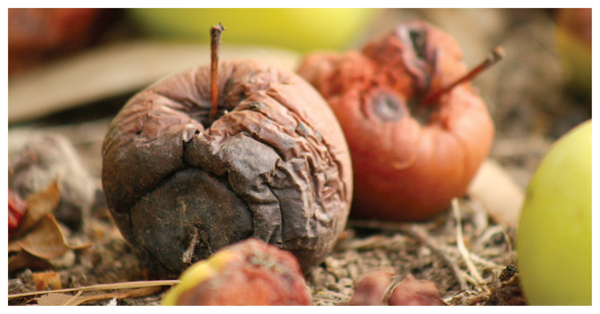

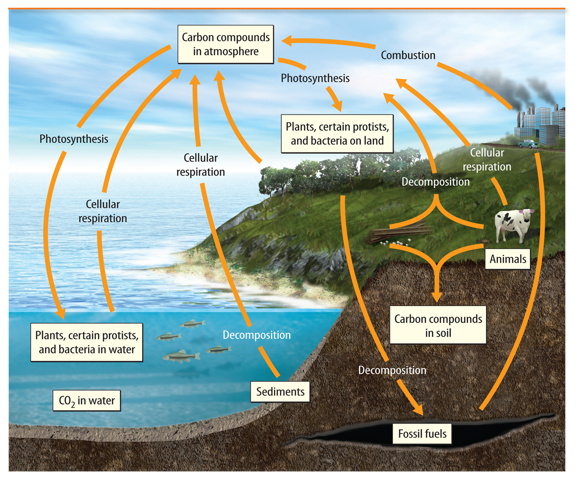
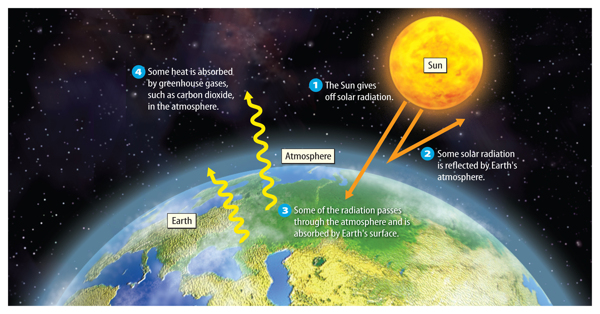
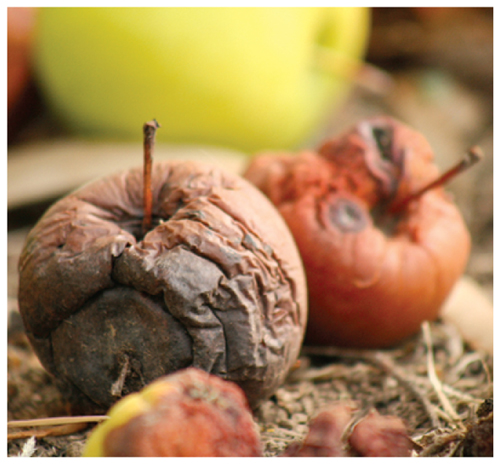
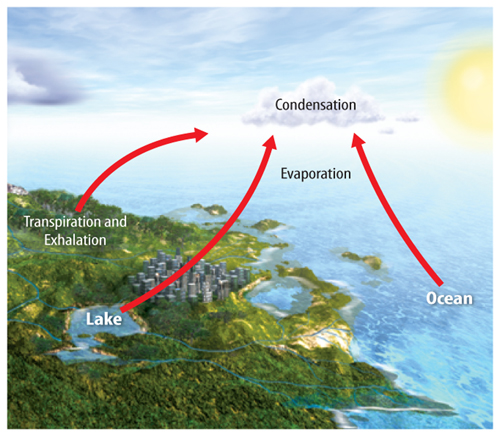
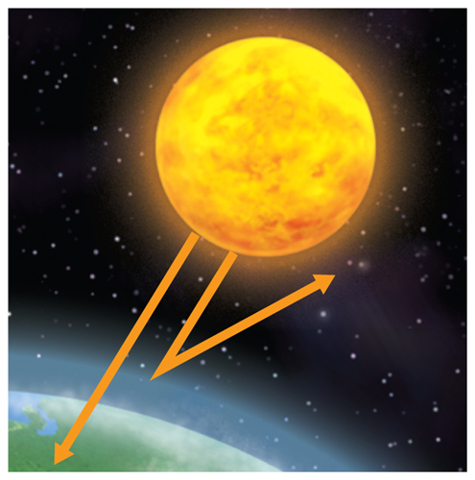

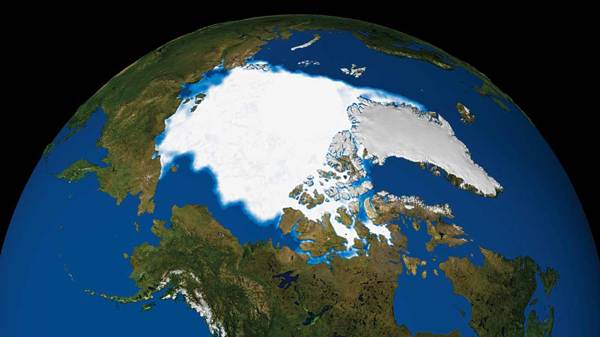
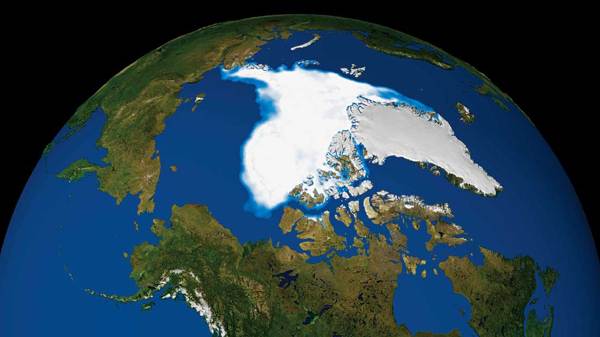
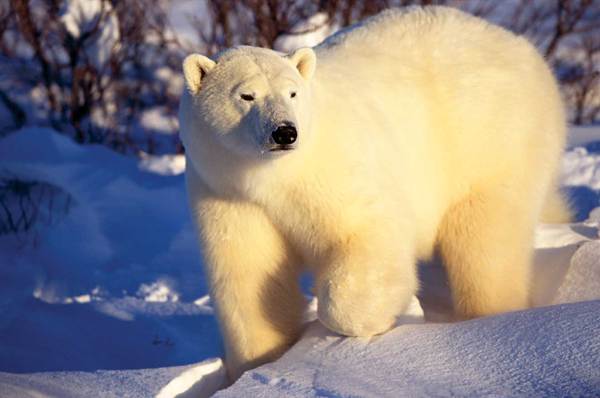
0 comments:
Post a Comment